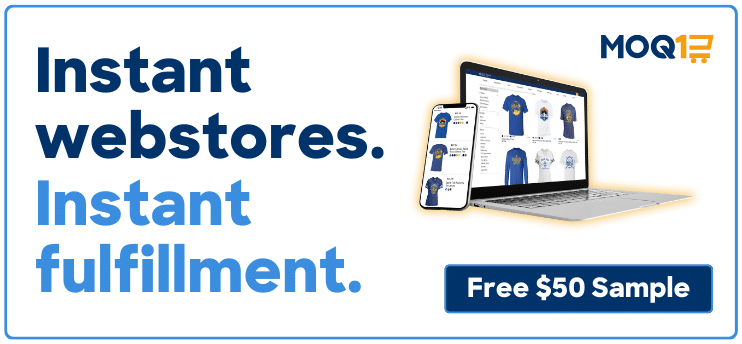With consumers expecting to order and receive a custom t-shirt or mug within a few days, print-on-demand (POD) service is becoming increasingly the norm for many retail businesses.
For distributors who manage online stores for companies, schools or organizations, POD may become a standard operating procedure to ensure fast turnaround versus waiting weeks to ship merch.
PPAI Media asked Chris Victory, head of partnerships at business services provider Printful (PPAI 885793), to weigh in on the opportunities POD presents for distributors this year. Victory has more than two decades of experience leading business development and partnership teams, including at Shopify.
PPAI Media: How have the demands of clients and distributors in the promotional merchandise industry evolved in recent years, and what’s driving these changes?
Chris Victory: In recent years, particularly since 2020, there has been a noticeable shift toward more personalized, smaller-run orders rather than traditional bulk purchases. Additional emerging trends, such as the need for faster delivery times and the growing demand for reliable, cost-effective global solutions, are driving the industry to implement more flexible and efficient fulfillment systems capable of seamlessly serving international clients.

Chris Victory
Head of Partnerships, Printful
PPAI Media: What are some common inventory risks faced by distributors, and how can flexible fulfillment solutions address these issues?
Victory: There are two opposite but equally important risks to consider when it comes to inventory: overstocking and understocking. With overstocking, there’s the possibility of your capital getting tied up in unsold items. However, understocking can result in missed opportunities if the product is in high demand.
POD takes these risks out of the equation by allowing distributors to request production of only what’s needed and when it’s needed, providing flexibility and reducing the risk of unsold products or the inability to fulfill orders on time.
PPAI Media: Why is reducing waste an increasingly important focus for promotional merchandise businesses, and what strategies are proving most effective?
Victory: Reducing waste is increasingly important, as it aligns with environmental goals, resonates with value-driven consumers and ultimately drives costs down. By avoiding overproduction, brand value and appeal are increased, and costs are contained.
ICYMI: EU Releases New Rules For Packaging Waste
POD is a highly effective strategy, as it produces items only when ordered, eliminating surplus inventory and reducing waste. Beyond environmental benefits, this model offers flexibility and meets the growing demand for personalization.
PPAI Media: How has the push for greater product customization influenced the types of solutions distributors are seeking?
Victory: Businesses offering greater customization and personalization can provide the ultimate flexibility across products. Whether that’s allowing end customers to choose specific colors and sizes or personalize products, distributors can offer enhanced customization to meet the growing demands of customers.
Solutions like Printful must be able to meet these demands with flexible technology that adapts to changing needs, lowering the burden on both the distributor and the customer. This flexibility is especially valuable when dealing with unforeseen circumstances, like last-minute promotional events or the need to pivot to new product offerings in a short timeline.
RELATED: Printify, Printful Announce Merger Deal
PPAI Media: What trends or innovations should the industry expect in the next few years regarding inventory management, sustainability or customization?
Victory: Looking ahead, we’ll see continued growth in eco-friendly materials and sustainable production methods. Consumers are increasingly concerned with the environmental impact of their purchases, and businesses will need to adapt in the way they work and what they are offering. This will affect purchasing decisions, but also ultimately help to reduce costs.
In terms of customization, we’ll likely see more advancements and flexibility in digital printing technologies, allowing for even more complex and high-quality custom designs. Inventory management will also continue to evolve with AI and predictive analytics, enabling distributors to better forecast demand and optimize fulfillment.
The future of the industry is all about agility, sustainability and providing customers with unique, personalized products.


